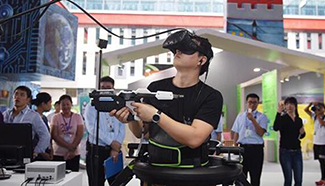BEIJING, Oct. 13 (Xinhua) -- China plans to launch an X-ray pulsar navigation satellite (XPNAV-1) in November to test autonomous spacecraft navigation, according to China Aerospace Science and Technology Corporation (CASC) Fifth Academy.
X-ray pulsar navigation is an innovative navigation technique in which periodic X-ray signals emitted from pulsars are used to determine the location of a spacecraft in deep space, said Shuai Ping, chief system designer of the satellite.
The satellite, developed by CASC Fifth Academy, weighs more than 200 kilograms and carries two detectors.
In its mission, the satellite will test the detectors' functions in responding to the background noise of the universe, outline pulsar contours, and create a database for pulsar navigation, the academy said.
X-ray pulsar navigation techniques will help reduce the reliance of spacecraft on ground-based navigation methods and are expected to achieve autonomous spacecraft navigation in the future.










